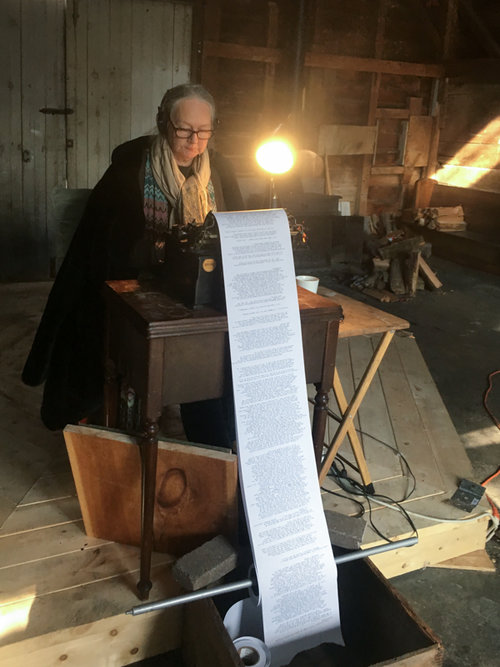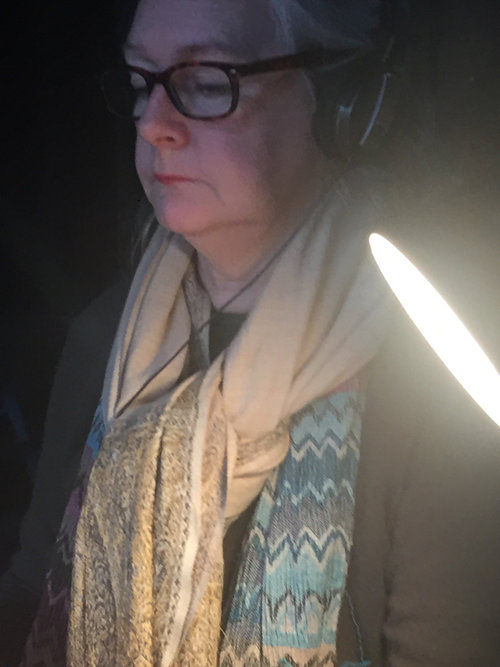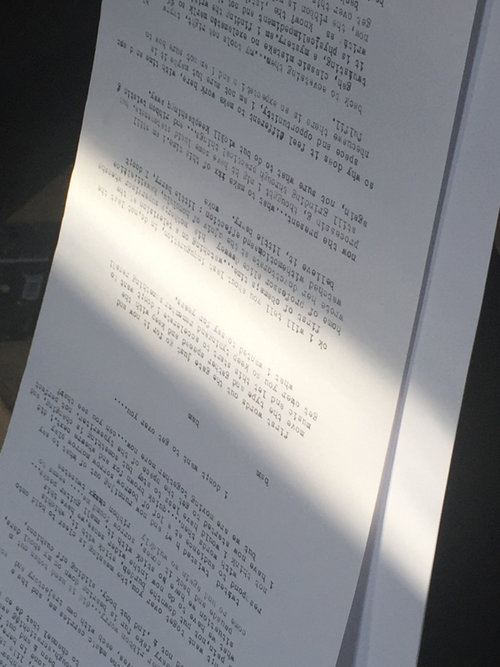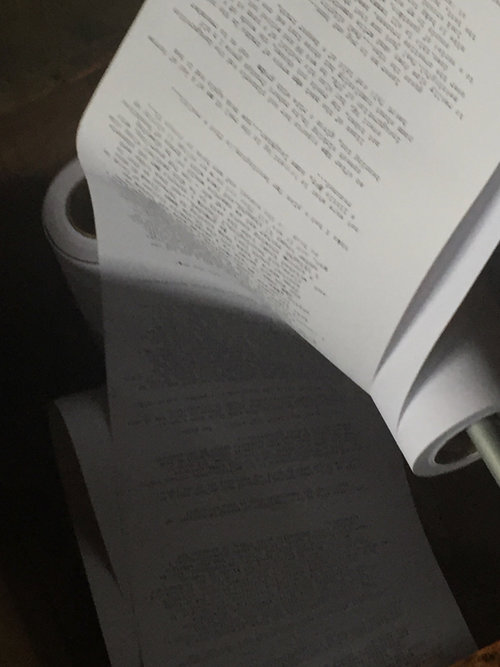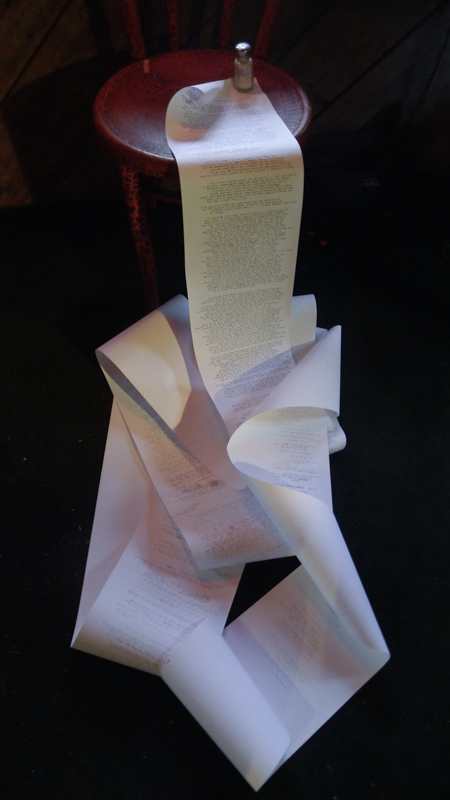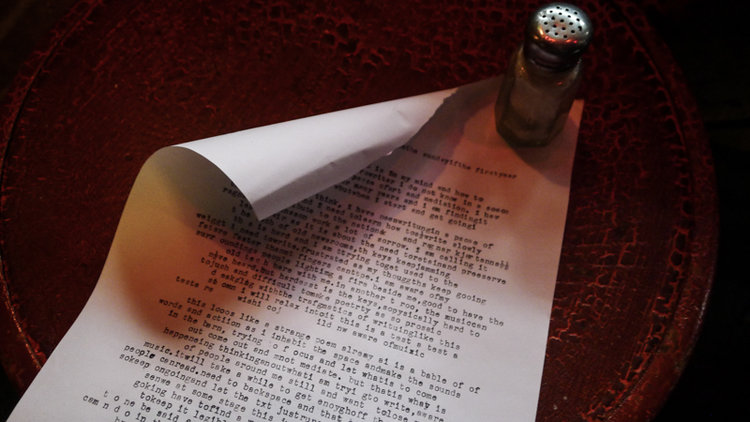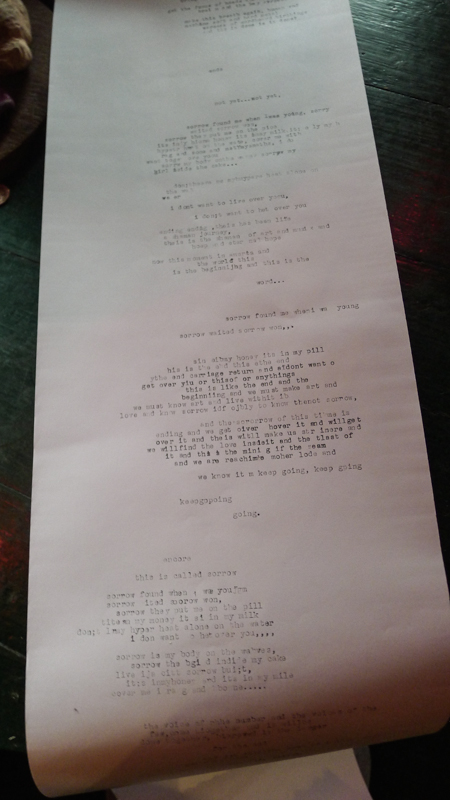Lead to Air
Creative archaeologist and journalist, Christine Finn, celebrated the role of the media, in Lead to Air, a performance art piece inspired by old newsroom technology and collaborative process, in sound, word, and action. Lead to Air is a multi-layered durational work. In an otherwise empty barn, Finn using a vintage Royal typewriter, typed for six hours onto a roll of continuous paper, which falling off the typewriter and the edge of the stage as an invitation for the audience to read. In headphones she was listening to another six-hour durational work, A Lot of Sorrow www.alotofsorrow.com by the Icelandic artist Ragnar Kjartansson and Brooklyn-based Ohio band, The National, while the audience needed to make the journey to the salon of the Mill House to hear the music here. Lead to Air is not a collaboration with these artists, but a tribute to the work of collaborative technology and creativity.
Finn's piece was the consummation of various influences over her 40-year career as a writer, reporter, and artist. It was a homage to analogue newsroom technology, lino-type machines, the era of copy-takers, and a nod to Jack Kerouac's continuous paper manuscripts, Remedios Varo's 1961 surrealist painting Embroidering the Earth's Mantel, Tim Youd's 100 Novels project timyoud.com, and overlapping process: reporting as a form of poetry and performance as a form of archaeology. While exploring these over years, she found the catalyst for Lead to Air in a dark room at the Chicago Art Institute, where the video installation, A Lot of Sorrow, was playing on a continuous loop. The durational intensity and sound of the piece, her first encounter with The National's music, produced an unexpected recall: long hours working in British newsrooms in the 70s and 80s on press days, in particular the sound of typewriter keys continuing relentlessly against an advancing deadline, one shared by all the participants in the process. The work launched Finn's wider dig into the legacy of old media, and what has been lost - or retained - in the process of technological transformation.
Christine Finn was born in St.Helier, Jersey, Channel Islands, in 1959. She is a print and broadcast journalist, author, and artist, and has a background in archaeology and anthropology. She draws on a range of media for her art work, and describes the Leave Home Stay project as a form of creative archaeology, inspired by news events and narrated through photography, film, and installation.
For further information



